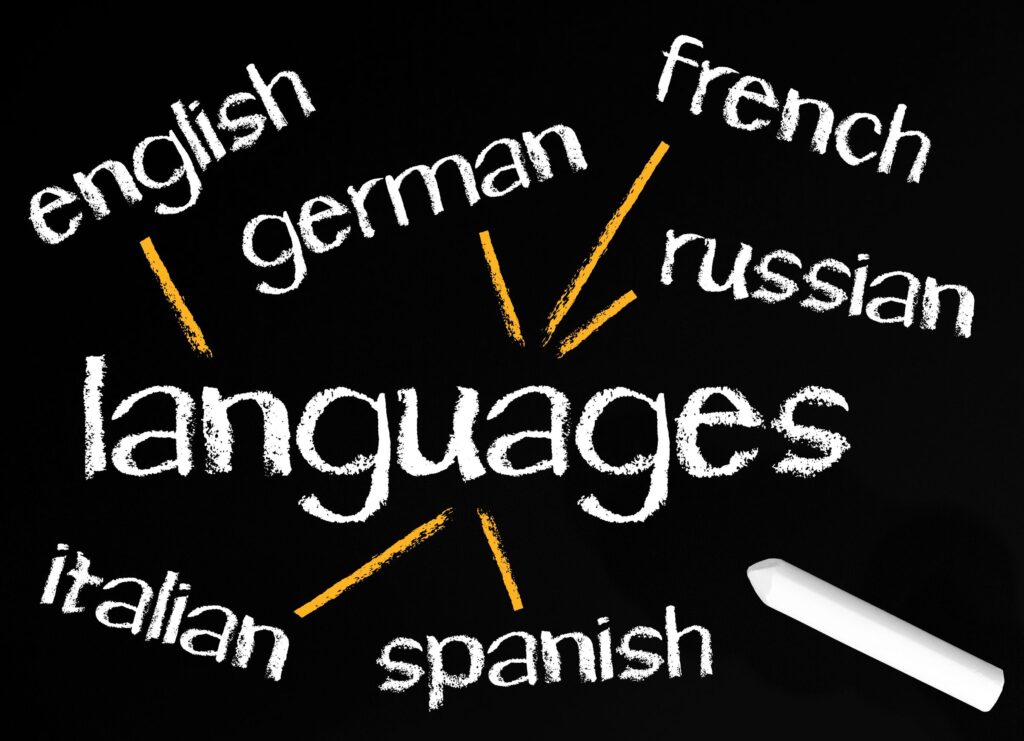Global companies remain vigilant all the time to be one or two steps ahead of the competition. And why not? Aside from facing local competition in their new markets head-on, they must deal with other competitive businesses in their own country.
Going past the language barrier
In the past, there were only a few localized economies. But the situation already changed as travel and communication have become faster and cheaper. Developing countries are making their mark, improving their rankings, and topping the list of merchandise exporters and importers in recent years. These developments make developing countries very attractive to leading countries, and they rush to capture these markets and transact with them.
One obstacle is the language barrier. While communication today is very accessible, and English is the language of international commerce, it is not advisable for global companies to assume that they can penetrate and explore new markets using only one language. Consumer preference is still the top priority, which means international companies planning to win over global consumers have to provide them with information in their native language.
Localization
Global companies, including those engaged in e-commerce, which, incidentally is becoming a significant industry, must win the approval and trust of global consumers. One of the best ways to reach out to foreign consumers, aside from providing high-quality products and services, is to localize their websites.
Localization means that you appear local to the target market while retaining your global business identity. Localization is the process of translating content and adjusting messaging and tone to fit the preferences of the target audiences.
Why you should invest in localization
Global brands attain success because they satisfy consumer demands with a diverse line-up of products and services. Likewise, they manage to communicate directly with their consumers in the languages they speak. Here are some of the reasons why localization is vital to your global business.
Closing the communication gap
Localization help companies communicate across the border. They connect with their customers by using language to provide new and potential customers with what they need, in the language that is familiar to them.
Opening doors to new markets
Localization converts content in the target consumers’ native tongue, transforming websites, and other information that fit local norms and culture. It makes access to information faster and easier, helping consumers make purchases favorable to international brands.
Localization motivates customers to have better connections and engagement with international brands and eventually developing trust, acceptance, loyalty to the brand.
Focus on target consumers
Global brands realize that approaching local consumers means providing them with products, services, and information that they can easily understand. By localizing websites, marketing, and advertising campaigns, and other brand and company information for local consumption, local consumers learn about their products and services that fit their preferences. At the same time, global brands learn how local consumers meet their expectations about the company and the brand, and how they want global brands to serve them.
By focusing on the local consumers, global brands achieve a competitive advantage because they focus on providing a high level of customer satisfaction, with information that customers can easily understand.
Top languages used in website localization
One of the questions companies ask is which languages they should use for localization. The world speaks 7,117 languages, but half of the world’s population speaks only 23 languages. Companies willing to localize can potentially reach a wide range of global audiences using the top ten languages.
According to the latest available data for 2020, here are the top 10 languages spoken in the world today, by the number of native speakers:
- English: 1,132 million
- Mandarin Chinese: 1,120 million
- Hindi: 637 million
- Spanish: 538 million
- French: 277 million
- Standard Arabic: 274 million
- Bengali: 265 million
- Russian: 258 million
- Portuguese: 252 million
- Indonesian: 199 million
Following the top ten are Urdu, Standard German, Japanese, Swahili, Marathi, Telugu, Turkish, Yue Chinese, Tamil, and Western Punjabi.
Using this list as your guide, you’ll be able to reach most of the consumers that matter. These languages are not only native languages in developed and developing countries but also the languages that dominate most websites and the Internet. For example, many people around the world are native English speakers. At the same time, more people speak English as a second language, while others have a working knowledge of English.
In most cases, businesses can only enter new offshore markets when their information is in the local language. Even if local consumers understand the foreign language, they prefer to remain loyal and will only explore and patronize global brands that have local content.
When localizing websites and other brand information, it is critical to understand the cultural difference among speakers of a particular language, as well as their nuances. Some words from the same language may have a slight difference in meaning to other speakers. Companies should work with professional translation and localization companies with the subject matter and cultural expertise to ensure that the localization will fit the target customers appropriately.
Common pitfalls in website localization
Localization is a major corporate decision. Thus, care should be given to its planning and execution. The company should choose the right team to handle the localization strategy and choose the right localization partner. Localization is an investment, so the company has to make it right the first time, and avoid most of the common mistakes people commit during the process.
- Using flags instead of the name of the language in the pull-down menu. Some flags are similar to one another. Rather than using flag icons, it is easier to understand the language name. Moreover, some countries speak two or more languages, and using a flag icon will not indicate the language the website uses for its localized content.
- Using the country name is another pitfall. This can lead to confusion, inaccuracy, and controversy. For example, if you are exclusively catering to France and its consumers, it is all right to use the name of the country. But if you are selling your products to France and other French-speaking countries, it is better to use the name of the language instead of the country.
- Forgetting capitalization rules for other languages. In English, proper names, including language names, are capitalized. Therefore, when using English, you write the word “Spanish” beginning with a capital “S.” But when you translate Spanish, you should write it as “español,” with a lower case “e.” The German language has several grammar and spelling rules to follow, such as capitalization of all nouns and the personal pronoun “Sie,” non-capitalization of adjectives, and so on.
- Using English for the names of all languages with localized content. Since you already translated and localized the content, it is vital not to forget to translate the language name instead of using English. It would help if you made it easier for consumers to find the content in their language by using the right term for the language they speak.
- Forgetting to test and verify the website before going live. Many languages have accents, diacritics, and umlauts that are essential to the spelling of various words. Their inclusion is necessary because their absence can change the meaning of a term. For example, ”already” is schon in German. But adding umlauts, the word “schön” will translate into “beautiful.”
Best practices for website localization
It pays to have a professional translation and localization teams to work on your project because they have the experience and in-depth linguistic and cultural knowledge to turn your content that will resonate with the target audience.
To ensure that you catch the interest of the local consumers and engage them long enough to know more about your company and your products, here are some guidelines to follow:
- Know your consumers (the growth rate of the market, the affordability of your products, and consumers’ preferences and buying habits)
- Know the competition
- Know the linguistic and cultural nuances
- Select the regions you want to target
- Internationalize your brand’s website
- Treat your customers to a great user experience
- Modify your SEO strategy to fit the local market
- Hire an expert group for translation and localization
- Test and re-test
Call eTranslation Services for expert website translation and localization services
You do not have to spend more time on research. If you need website localization that will make an outstanding contribution to your global sales and marketing strategies, please get in touch with us at [email protected] or at (800) 882-6058. Our experienced, native-speaking translators are available to provide you with professional, excellent and accurate translation and localization services wherever you are. Get in touch with eTranslation Services right now.



